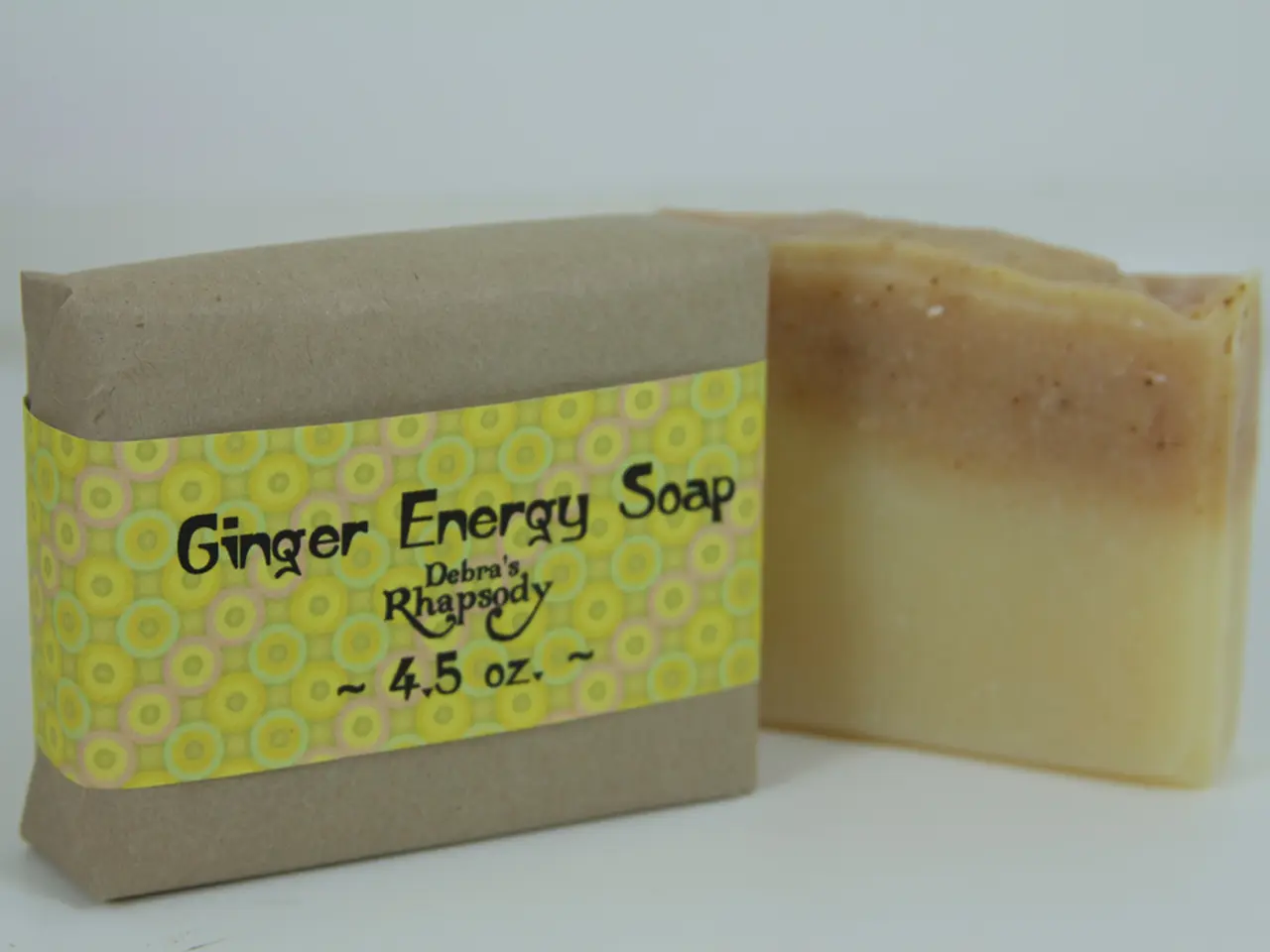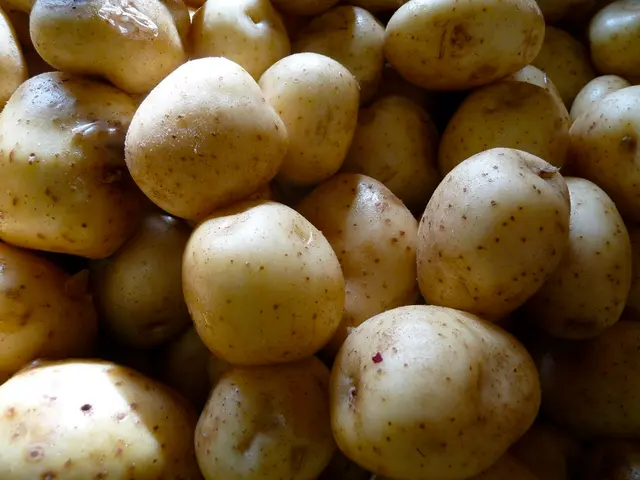"Eliminating Persistent Pests with Insecticidal Soap: Learn Three Easy DIY Recipes for a Homemade Spray"
Insecticidal soap, a popular natural pesticide, is highly effective against small, soft-bodied pests such as aphids, spider mites, mealybugs, whiteflies, and scale insects. This eco-friendly solution works by directly contacting these pests and penetrating their exoskeletons, disrupting cell membranes, causing dehydration, and ultimately leading to their death. The soap removes the protective waxy coating on the insect’s body, causing fluid loss and suffocation.
However, it is essential to note that insecticidal soap is generally ineffective against hard-bodied or flying pests with well-developed exoskeletons such as adult beetles and caterpillars. It also does not affect pests in protected life stages, like eggs or pupae. Flying pests like fungus gnats or whiteflies are sometimes controlled with other methods such as sticky traps, though their soft-bodied immature stages can be vulnerable to soap.
A simple recipe for homemade insecticidal soap involves mixing 1 tablespoon (15 ml) of mild dish soap (avoiding products with "ultra" or "super"), 1 cup (240 ml) of vegetable oil, and water for dilution. For an organic garden, it is crucial to use organic, mild dish soap to avoid affecting beneficial insects.
When using insecticidal soap, application is key. It should be applied early in the morning, just as the dew is drying, and only to healthy plants that are not under stress. Store-bought horticultural soaps should be used according to the application instructions provided. Some plants with a thick waxy layer, such as succulents, may be more susceptible to horticultural soaps, so it is important to research the specific needs of each plant before application.
It is important to remember that while insecticidal soap is a valuable tool in pest management, it should not be the only method used. Certain plants, such as Portulaca, Cucumber, Crown of Thorn, Plums, Cherries, Jade, Impatiens, Gardenia, Lantana, Nasturtium, River birch, Schefflera, Easter lily, Maidenhair fern, Red bud, Dieffenbachia, Poinsettia, Palms, Azalea, Begonia, Geranium, Fuchsia, may be sensitive to insecticidal soap and can develop toxicity symptoms like yellow or brown spots on leaves, brown leaf tips, or sunscald.
Insecticidal soap, also known as horticultural soap, is a non-toxic and environmentally-friendly natural pesticide. EPA-approved insecticidal soaps contain 1 to 2 percent soap by volume to minimize the risk of damaging plants. For DIY insecticidal soap, it is important to dilute the soap to the proper ratio first to avoid damaging plants.
In conclusion, insecticidal soap is a powerful tool against soft-bodied pests in gardens. However, it is essential to understand its limitations and use it correctly to avoid damaging plants. Always research the specific needs of each plant and consider using it in combination with other pest management methods.
[^1^]: Store-bought horticultural soaps should be used according to the application instructions provided. [^2^]: Insecticidal soaps should be applied early in the morning, just as the dew is drying, and only to healthy plants that are not under stress. [^3^]: An easy insecticidal soap recipe for regular use is made with 1 tablespoon (15 ml) of mild dish soap (avoiding products with "ultra" or "super"), 1 cup (240 ml) of vegetable oil, and water for dilution. [^4^]: Some plants with a thick waxy layer, such as succulents, may be more susceptible to horticultural soaps. [^5^]: Insecticidal soap is most effective against soft-bodied pests such as aphids, whiteflies, spider mites, mealybugs, and scale. [^6^]: Insecticidal soap is not effective on insect eggs. [^7^]: Certain plants, such as Portulaca, Cucumber, Crown of Thorn, Plums, Cherries, Jade, Impatiens, Gardenia, Lantana, Nasturtium, River birch, Schefflera, Easter lily, Maidenhair fern, Red bud, Dieffenbachia, Poinsettia, Palms, Azalea, Begonia, Geranium, Fuchsia, may be sensitive to insecticidal soap and can develop toxicity symptoms like yellow or brown spots on leaves, brown leaf tips, or sunscald. [^8^]: Insecticidal soap is made from potassium salts of fatty acids naturally found in fats and animal oils or plant derived oils. [^9^]: Insecticidal soap works by removing the protective membrane from the insect's body, causing the insect to dry out. [^10^]: Horse chestnuts, sweet peas, bleeding hearts, mountain ashes, and Japanese maples do not appreciate soap applications. [^11^]: Correct use of insecticidal soap is crucial to avoid damaging plants, as applying the right type and concentration is essential. [^12^]: Harsh dish soaps are not organic and not suited for use in an organic garden, as they can affect beneficial insects. [^13^]: Insecticidal soaps may need to be reapplied weekly until pests are under control. [^14^]: Insecticidal soap has no systemic action, making it ineffective against chewing insects like caterpillars, flying pests, hard-bodied insects, or eggs. [^15^]: Insecticidal soap, also known as horticultural soap, is a non-toxic and environmentally-friendly natural pesticide. [^16^]: EPA-approved insecticidal soaps contain 1 to 2 percent soap by volume to minimize the risk of damaging plants. [^17^]: The all-around pest repellent recipe includes 1 tablespoon (15 ml) of pure liquid soap (like Castile soap), 1 quart (1 L) of warm water, 1 teaspoon (5 ml) of ground red pepper or garlic, and 1 teaspoon (5 ml) of apple cider vinegar. [^18^]: DIY insecticidal soap can be made using dish soap, but it needs to be diluted to the proper ratio first to avoid damaging plants. [^19^]: The traditional recipe for eco-friendly insect spray includes 2.5 tablespoons (37 ml) of vegetable oil, 2.5 tablespoons (37 ml) of pure liquid soap (like Castile soap), and 1 gallon (3.8 L) of warm water. [^20^]: Insecticidal soap residue breaks down quickly and can be used even on the day of harvest. [^21^]: Insecticidal soap is highly effective against small, soft-bodied pests such as aphids, spider mites, mealybugs, whiteflies, and scale insects. [^22^]: It works by directly contacting these pests and penetrating their exoskeletons to disrupt cell membranes, causing dehydration and death. [^23^]: The soap removes the protective waxy coating on the insect’s body, causing fluid loss and suffocation. [^24^]: In contrast, insecticidal soap is generally ineffective against hard-bodied or flying pests with well-developed exoskeletons such as adult beetles and caterpillars. [^25^]: It also does not affect pests in protected life stages, like eggs or pupae. [^26^]: Flying pests like fungus gnats or whiteflies are sometimes controlled with other methods such as sticky traps, though their soft-bodied immature stages can be vulnerable to soap. [^27^]: | Pest Type | Effectiveness of Insecticidal Soap | [^28^]| Soft-bodied pests | Highly effective (aphids, mealybugs, spider mites, whiteflies, scale) | [^29^]| Hard-bodied pests | Generally ineffective (adult beetles, caterpillars) | [^30^]| Protected stages | Ineffective (eggs, pupae) | [^31^]| Flying pests (adults) | Often resistant; other control methods used (sticky traps, neem oil) |
- One approach to maintaining a sustainable lifestyle in the fashion-and-beauty sector could involve adopting healthy-cooking methods, such as using insecticidal soap equivalents made from natural oils for skincare products.
- The global-cuisines landscape has been revolutionized by the advent of homemade recipes using locally sourced ingredients, further promoting sustainable living and the food-and-drink industry.
- In the home-and-garden segment, eco-conscious homeowners increasingly opt for pesticide alternatives like insecticidal soap, aligning with their preference for healthy-cooking and sustainable-living practices.
- In the realm of easy DIY projects, novice chefs can explore healthy-cooking recipes incorporating various global-cuisines ingredients, while home-and-garden enthusiasts can experiment with homemade insecticidal soap formulae to address soft-bodied pests on their plants.







